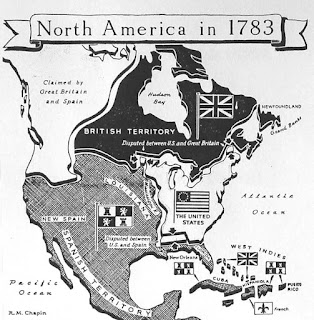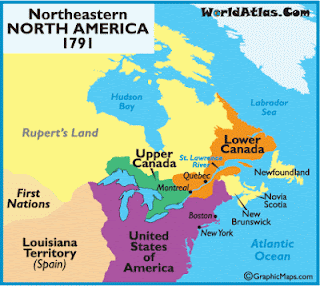Recent classes:
- corrected review of British rule, 1760-1815 (F-I-B, T-or-F, timeline, maps 1763-1791);
- timeline review of the entire British period, 1760-1867 (on the board);
Next three classes:
1) using titles and headings, skim pp. 51-60 to get an overview of population growth, migrations and changes in Quebec's territory between 1815-1867;
2) document booklet: finding information pertaining to changes in population and changes in territory
- with a partner analyse the documents, classify them, make observations about the topic and answer questions based on them (white sheet)...
- correct and discuss in class
- to complete:
- short, simple handout which summarises the results of immigration on Lower Canada; on the back, a map of seigneurial and township areas of Quebec; 3 questions to answer;
- map of B.N.A, Act of Union, 1840; use textbook, p. 309;
- to study: maps, textbook p. 51-60, handout and documents:
- short quiz: 15 questions - 2 about Loyalists & Constitutional Act, 13 about new info (1815-1860);
Wrap-up:
- Short class notes that summarise the British period.
From the Canadian Encyclopedia, about the Townships:
The first of the 95 townships conceded was Dunham (1796). In 1792, the region (then an electoral county) was called Buckinghamshire. Later it became known as the "Eastern Townships of Lower Canada" (as opposed to the "Western Townships of Upper Canada" ) and "Eastern Townships" by 1806. The name was translated to "Townships de l'Est" towards 1833 and "Cantons de l'Est" in 1858, but the region officially became "Estrie" in 1981; this last name is still debated.
Early settlers were American, English and Irish. After 1840 a wave of French colonization swept into the region... Anglophones now account for less than 10% of the region's population.
http://www.thecanadianencyclopedia.com/articles/eastern-townships




